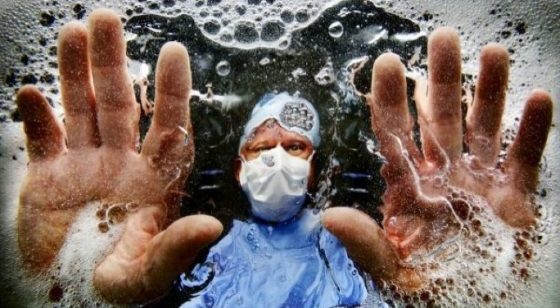
The pipes of hospitals carrying away the infections of the sick are bound to be quite disturbing places. But scientists dared to snoop around in them anyway and found that they can fuel superbugs.
In a new study, published by The American Society for Microbiology, scientists determined that antibiotic-resistant bacteria are bred in the plumbing of hospitals. The study, titled Genomic Analysis of Hospital Plumbing Reveals Diverse Reservoir of Bacterial Plasmids Conferring Carbapenem Resistance found that even when hospitals themselves are impeccably clean of infectious bacteria and viruses, the pipes that carry away those micro-organisms are not.
Even when the sinks, faucets, bedrails and countertops of patients’ rooms are largely free of germs that resist modern medicines, the genetic building blocks for antibiotic resistance intermingle freely in the pipes connected to those rooms, according to a study published Tuesday in the journal mBio. That DNA can give superbugs the power to defeat modern medicines and threaten the lives of patients. –LA Times
The DNA scientists were able to swab from the inside of the pipes showed that these little organisms have the power to become vast medicine-resistant superbugs that could wipe out a lot of people. The study began back in 2012 after a severely ill woman carried a bacterial infection into a New York health care center.
In 2012, a team of sleuths at the National Institutes of Health’s Clinical Care Center broke new ground in the effort to rout a deadly antibiotic-resistant infection that sickened at least 17 patients — and killed six — during the summer of 2011. Using whole-genome sequencing for the first time in such an investigation, the team identified the culprit: a super-potent strain of Klebsiella pneumoniae bacteria carried into the center by a seriously ill woman from New York.
The microbe, they discovered, was probably traveling between rooms after lodging in sinks and drains. Some were ripped out and others were sanitized in an extensive eradication effort. –LA Times
The study itself came to the following conclusion:
Carbapenemase-producing organisms (CPOs) are a global concern because of the morbidity and mortality associated with these resistant Gram-negative bacteria. Horizontal plasmid transfer spreads the resistance mechanism to new bacteria, and understanding the plasmid ecology of the hospital environment can assist in the design of control strategies to prevent nosocomial infections. A 5-year genomic and epidemiological survey was undertaken to study the CPOs in the patient-accessible environment, as well as in the plumbing system removed from the patient. This comprehensive survey revealed a vast, unappreciated reservoir of CPOs in wastewater, which was in contrast to the low positivity rate in both the patient population and the patient-accessible environment. While there were few patient-environmental isolate associations, there were plasmid backbones common to both populations. These results are relevant to all hospitals for which CPO colonization may not yet be defined through extensive surveillance.-American Society for Microbiology
During the study, all of the samples drawn from the piping system leading from the ICU tested positive for bacterial plasmids that confer resistance to carbapenems. And so did all seven samples drawn from wastewater samples taken from two external manholes associated with the NIH Clinical Center.
This means that hospital pipes can be the breeding grounds for the next superbug, and once infected, could eliminate up to 50% of those who become infected with the superbug.





0 Comments